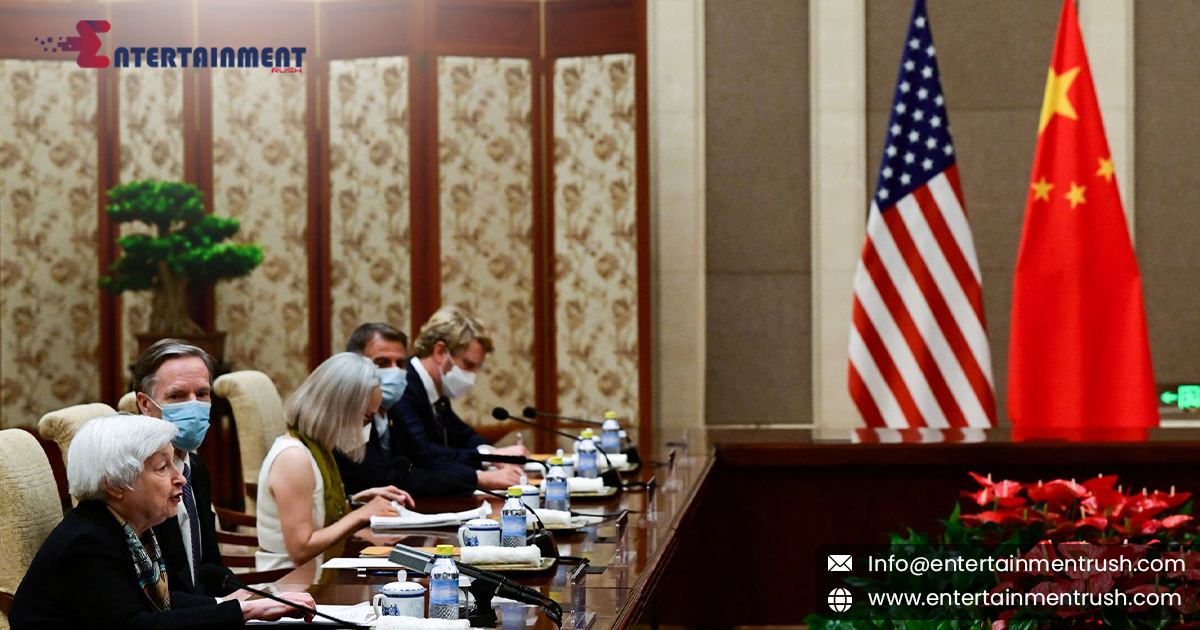As global trade dynamics continue to shift, U.S. officials are preparing for a pivotal visit to China aimed at addressing escalating trade tensions between the two economic giants. This high-stakes dialogue comes at a time when the trade relationship between the U.S. and China has become increasingly strained, impacting not only the two nations involved but also the broader global economy. The upcoming discussions are expected to focus on key issues affecting bilateral trade and economic policies, with the potential to influence future relations and economic stability.
The Context: Rising Trade Tensions
In recent years, the U.S.-China trade relationship has been marked by a series of conflicts and challenges. Tariffs, trade barriers, and disputes over intellectual property rights have fueled tensions between the two countries. These issues have not only affected businesses and consumers in both nations but have also contributed to uncertainties in the global market.
The trade tensions have been exacerbated by geopolitical factors, including national security concerns and differing approaches to economic governance. As both countries navigate these complex issues, the need for direct communication and negotiation has become increasingly apparent.
The Purpose of the Visit
The upcoming visit by U.S. officials to China is a critical step in addressing the ongoing trade disputes and working toward potential solutions. The primary objectives of the visit include:
Resolving Trade Disputes:
One of the main goals of the discussions is to address and resolve specific trade disputes that have arisen between the U.S. and China. This includes negotiating over tariffs, trade barriers, and other issues that have led to increased costs and uncertainties for businesses in both countries.
Strengthening Economic Ties:
The visit aims to explore opportunities for strengthening economic ties and improving cooperation between the two nations. This includes discussions on trade agreements, investment opportunities, and ways to enhance economic collaboration.
Addressing Structural Issues:
Beyond immediate trade disputes, the talks will likely cover structural issues impacting the bilateral relationship. This includes concerns related to intellectual property rights, market access, and fair trade practices.
Building Trust and Communication:
Effective dialogue is essential for managing and mitigating tensions. The visit provides an opportunity for both sides to build trust, establish clear communication channels, and work towards a more stable and predictable trade environment.
The Potential Impact
The outcome of the discussions between U.S. officials and their Chinese counterparts could have significant implications for both countries and the global economy. Key potential impacts include:
Economic Stability:
Resolving trade disputes and reaching agreements could provide much-needed stability for businesses and markets. It could also help to reduce uncertainties that have been affecting investment decisions and economic growth.
Bilateral Relations:
The success of the visit could pave the way for improved bilateral relations, fostering a more cooperative and constructive approach to managing economic issues. Conversely, a lack of progress could further strain relations and lead to additional conflicts.
Global Trade Dynamics:
The U.S.-China trade relationship plays a crucial role in the global economy. Developments in this relationship can have ripple effects on global trade patterns, supply chains, and economic policies in other countries.
Business and Consumer Impact: A resolution to trade disputes could lead to more favorable conditions for businesses and consumers, including reduced costs and improved market access. Conversely, ongoing tensions could continue to impact prices and availability of goods and services.
Challenges and Opportunities
The visit comes with its own set of challenges and opportunities. The complexities of the U.S.-China trade relationship, combined with geopolitical factors and domestic pressures in both countries, create a challenging negotiation environment. However, the visit also represents an opportunity for both sides to demonstrate a commitment to constructive dialogue and mutual benefit.
Navigating these challenges will require careful diplomacy, flexibility, and a focus on finding common ground. Successful negotiations could lead to meaningful progress and a more stable trade relationship, while failure to reach agreements could exacerbate existing tensions.
Looking Ahead
As U.S. officials prepare for their visit to China, the focus will be on achieving tangible results and addressing key issues affecting the trade relationship. Businesses, policymakers, and analysts around the world will closely watch the outcome of these discussions.
The visit represents a crucial moment in the ongoing effort to manage and resolve trade tensions between the U.S. and China. By engaging in direct dialogue and negotiation, both nations have the opportunity to address their differences, strengthen their economic ties, and contribute to a more stable and predictable global trade environment.
The upcoming visit by U.S. officials to China is a significant development in the ongoing trade relationship between the two countries. As tensions rise and economic challenges persist, the discussions offer a crucial opportunity to address disputes, strengthen cooperation, and work towards a more stable and constructive bilateral relationship. The outcome of these talks will have far-reaching implications for both nations and the global economy, making the visit a pivotal moment in international trade diplomacy.
